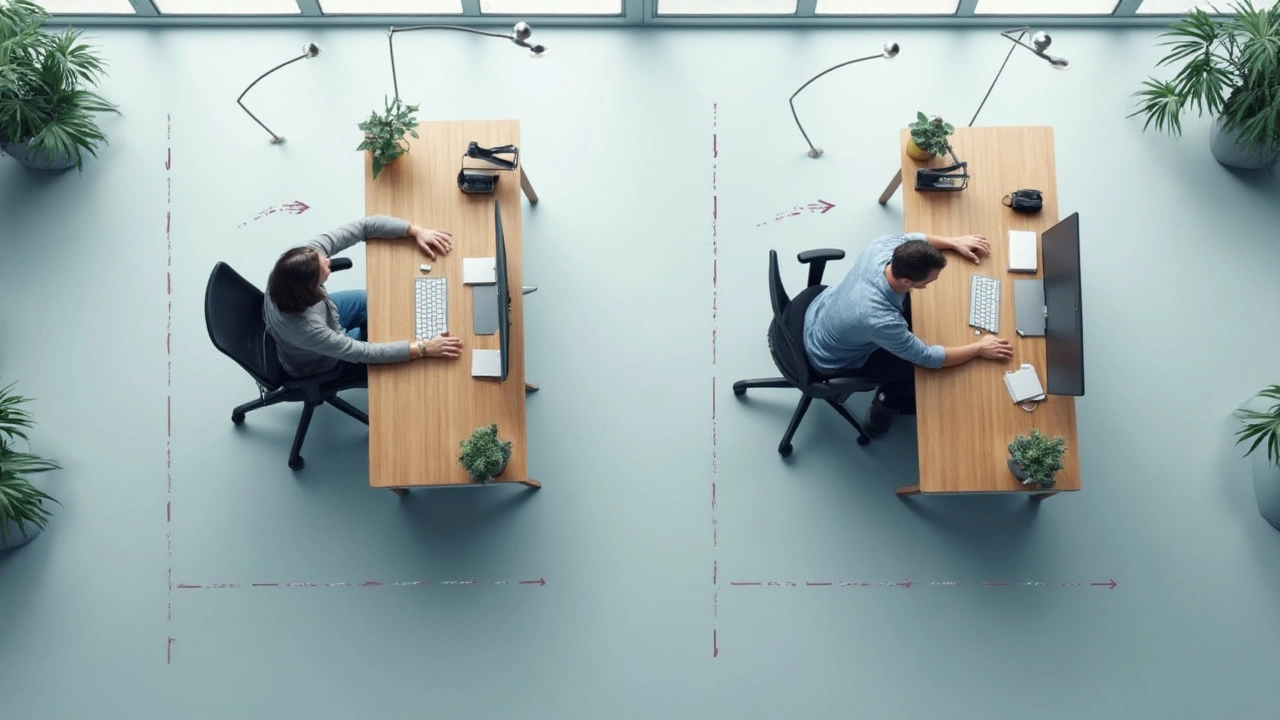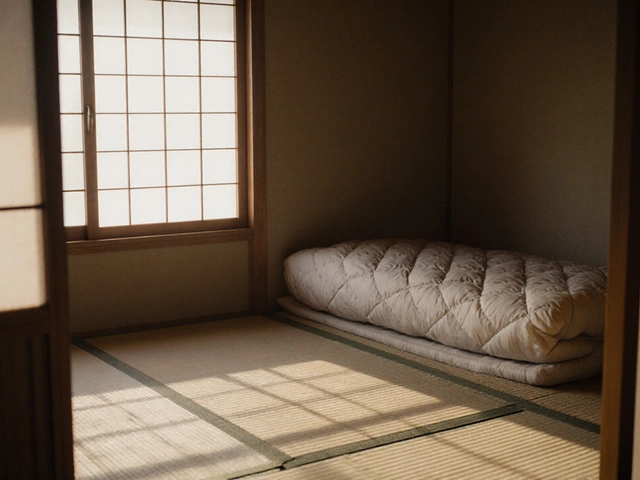Ever found yourself shifting endlessly in your office chair, fiddling with the height because somehow it just never feels quite right? You’re not alone. Tons of people sit at desks all day—one study found Canadians spent over 10 hours a day sitting in 2024. So, if we’re committed to long hours in front of a screen, that chair better be a good fit. The real question is: should your office chair be set high, low, or somewhere in between? The difference isn’t just comfort—it’s your back, your mood, even your long-term health at stake. Let’s break it down so your next tweak gets you a serious upgrade.
Why Chair Height Matters More Than You Think
Most people don’t realize just how much their chair height can mess with their body. Sit too high and your feet dangle, cutting off circulation and making your thighs ache. Too low? Your knees are up by your chest, shoulders scrunched, and you’re slouching like you’re trying to hide from your boss. Adjusting your chair to just the right level isn’t some fancy ergonomic trick—it’s the foundation of good posture.
The Canadian Centre for Occupational Health and Safety drilled into this and found poor chair height tops the list when it comes to triggering back pain and repetitive stress injuries in office workers. It’s not a small problem. If your chair’s off, your whole body compensates. You lean forward, hunch over, and end the day feeling like you’ve run a marathon (except all you did was answer emails). Proper height means less pressure on your hips and spine, and fewer headaches—literally.
Pain is one thing, but the right chair height also affects how alert you feel. A low chair leaves you slumping, making it harder for your lungs to fill. That shallow breathing is why you start to feel sleepy and foggy in afternoon meetings. Just a simple height fix can unlock better focus, clearer thinking, and even a better mood. It’s not magic, just biomechanics in action.
The Science Behind the Perfect Office Chair Height
If your chair’s height isn’t tuned to your body, you’re working with the wrong gear. Science says what you want is a chair set so your feet are flat on the floor (not the foot ring, not the chair base, but the ground), your knees bend at roughly 90 degrees, and your thighs are parallel to the floor. Your elbows need to form an L-shape (don’t worry, no geometry quiz at the end), so keep your forearms flat along your desk surface without hunching your shoulders.
Here’s a quick look at how different chair heights impact common issues. Found in a survey from an Ontario office ergonomics group:
| Chair Height | Common Issue | Reported Negative Effect |
|---|---|---|
| Too High | Feet dangle, thighs compressed | Lower limb numbness, hip pain |
| Too Low | Knees above hips, curved spine | Increased back pain, slouching |
| Just Right | Feet flat, knees at desk level | Improved posture, less fatigue |
Stanford’s Human Performance Lab ran experiments showing people who had their chair set 2–4 cm above or below optimal height actually doubled their risk for neck strain and shoulder discomfort. It’s that precise. Setting your chair by ‘feel’ usually isn’t close enough—most people stop adjusting once they stop feeling the sharpest pain. But don’t settle for less. Measure against your own body: feet on the floor, knees level with hips, elbows open and relaxed. A proper adjustable chair isn’t just a desk accessory, it’s a body-saver.

How to Adjust Your Chair Like a Pro
If wrestling with levers on your chair makes you feel like you’re piloting a spaceship, you’re not alone. But getting that perfect height isn’t rocket science. Grab a tape measure and, if you want to be nerdy about it, get serious for five minutes—it’s worth every second. For most adults, a seat height between 16 and 21 inches (about 40 to 53 cm) from the floor fits. But your desk’s height and your own leg length might call for tweaks. Here’s how to nail it:
- Sit all the way back in your chair.
- Keep your feet flat on the floor and knees bent at about 90 degrees.
- If your feet don’t touch the floor, lower the chair. If they’re squashed, raise it. Simple.
- Check your desk. If your elbows are below the desk, there’s too much reach. Raise the chair if you can. If your knees bang into the desk, either lower the chair (if possible) or the desk (if it adjusts).
- Armrests should support your arms without you shrugging your shoulders.
Not every desk is adjustable, unfortunately, and sometimes you just want to throw your chair out the window because your setup feels hopeless. If your desk is too high for your short legs, don’t stack phone books under your feet like it’s 1992. Grab an actual footrest; these boost your posture a ton.
This stuff isn’t just for the tall or short folks. Even people who are average height can end up hunched or strained if they don’t pay attention. Want a pro tip? Set a timer to remind you to check your posture every hour—you’ll catch slouching before it becomes a habit.
The Long-Term Impact of a Bad Chair Height
If the idea of aching knees or tight shoulders sounds like tomorrow’s problem, take a step back. Bad chair height doesn’t just make you stiff today—it can build up into lasting injuries. Ever heard of “tech neck”? That’s what happens when you’re stuck leaning forward day after day, craning your neck toward a poorly placed screen. CSU's workplace health study found that almost 65% of office workers reporting chronic neck or shoulder pain had their chair set too high or too low.
Here’s the kicker: small fixes today can add years to your joint health. A chair that’s even a couple centimeters off can crunch your lower back until disks start to wear down. It’s not just pain, but headaches, fatigue, sluggish blood flow, and poor focus all tie back to how you sit. Sure, nobody wants to talk about circulation, but the risks are real. Poor seating can even up your risk for varicose veins or DVT (deep vein thrombosis) if your legs are constantly pressed or dangling.
What does all this mean? Don’t get used to a bad seat. Too many folks adapt to discomfort, telling themselves it’s just aging or a normal part of work. Data shows most desk workers can cut their chronic pain complaints in half simply by fixing their workspace. Even Canadian insurance companies are starting to demand ergonomic checks before covering repetitive strain claims. That’s right: your chair height can impact what’s covered by your health plan. Wild, right?

Tips for Finding Your Personal Perfect Chair Height
No single height works for everyone, and every chair is different. But there’s a solid game plan to find your best setup. Don’t just eyeball it—do a mini audit of your own workspace. Here’s a checklist that actually works:
- Put your feet flat on the floor with shoes on (slippers count, bunny slippers optional).
- Your knees should be level with your hips, not higher or lower.
- Check the angle between your thigh and torso; 90–100° is gold.
- Rest your elbows on the desk at a right angle and relax your shoulders.
- If your desk is fixed and too tall, use a footrest (or a sturdy box in a pinch, though proper footrests are better for blood flow).
- Try typing for ten minutes. If you feel wrist pressure or shoulder tension, tweak the height up or down by a smidge and check again.
- If you use a laptop, raise your screen to eye level and use a separate keyboard. Chair height alone can’t fix everything if your screen is too low.
Canadian physiotherapists suggest re-checking your setup every few months or after any change—a new pair of shoes, a different chair, even a thicker desk mat. Bodies (and work setups) change. Setting up your space right means fewer aches, more energy, and that sweet feeling of walking away from your desk without groaning. Find what feels right, measure if you need to, and don’t settle for less than your best setup. Your body will thank you every single day.




